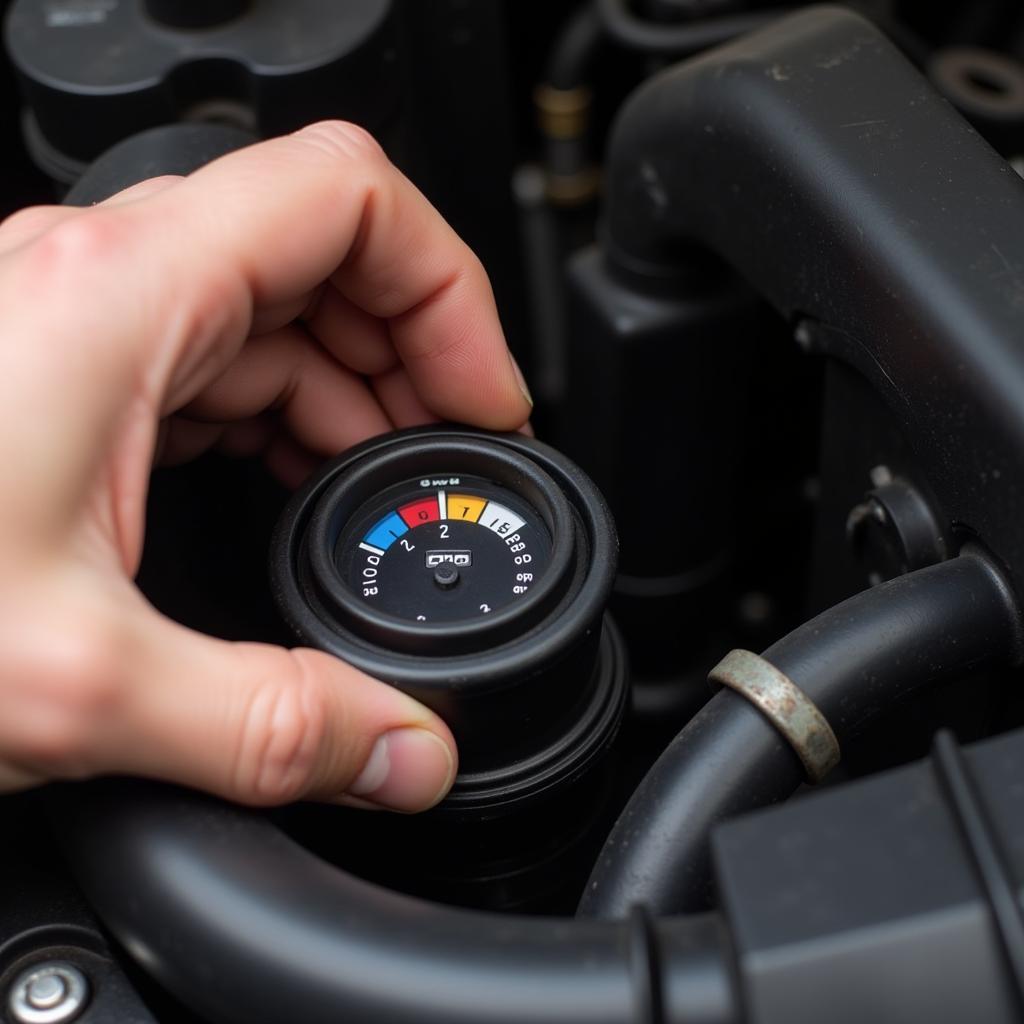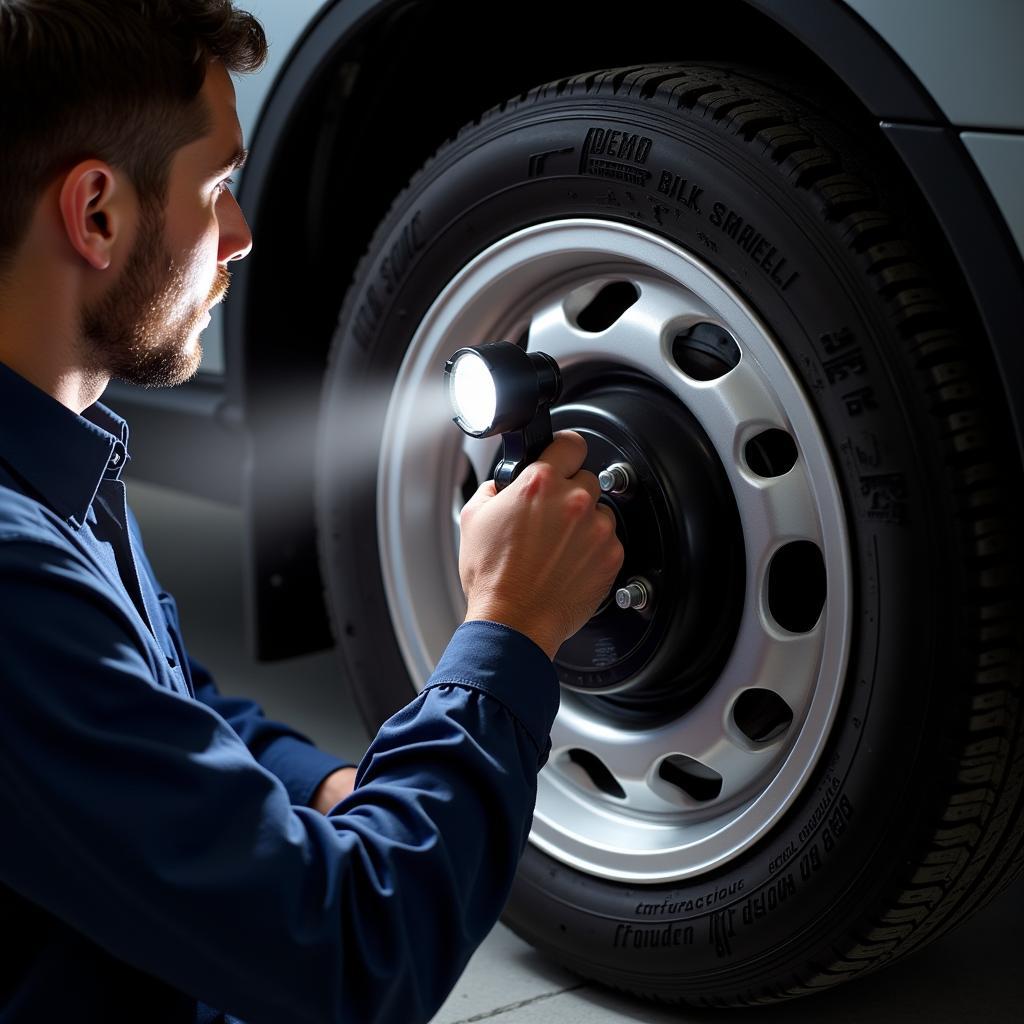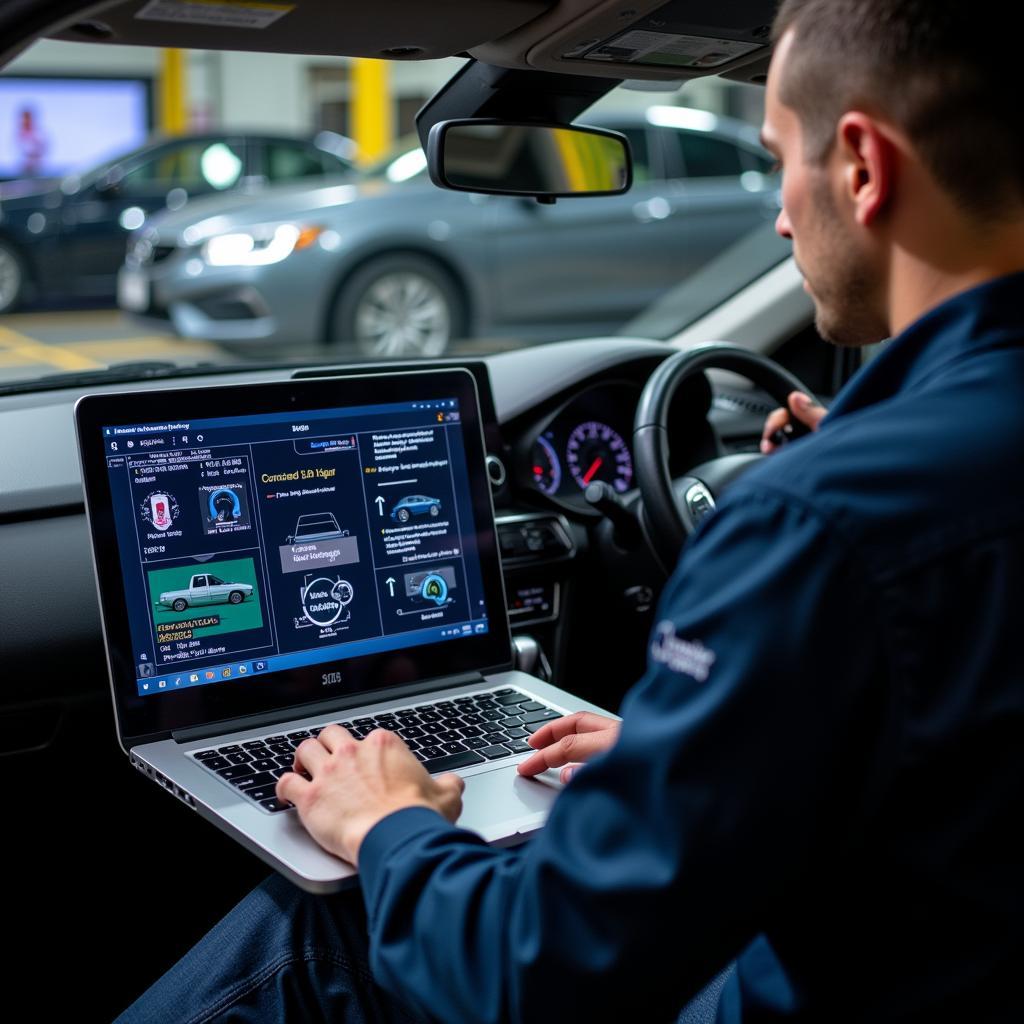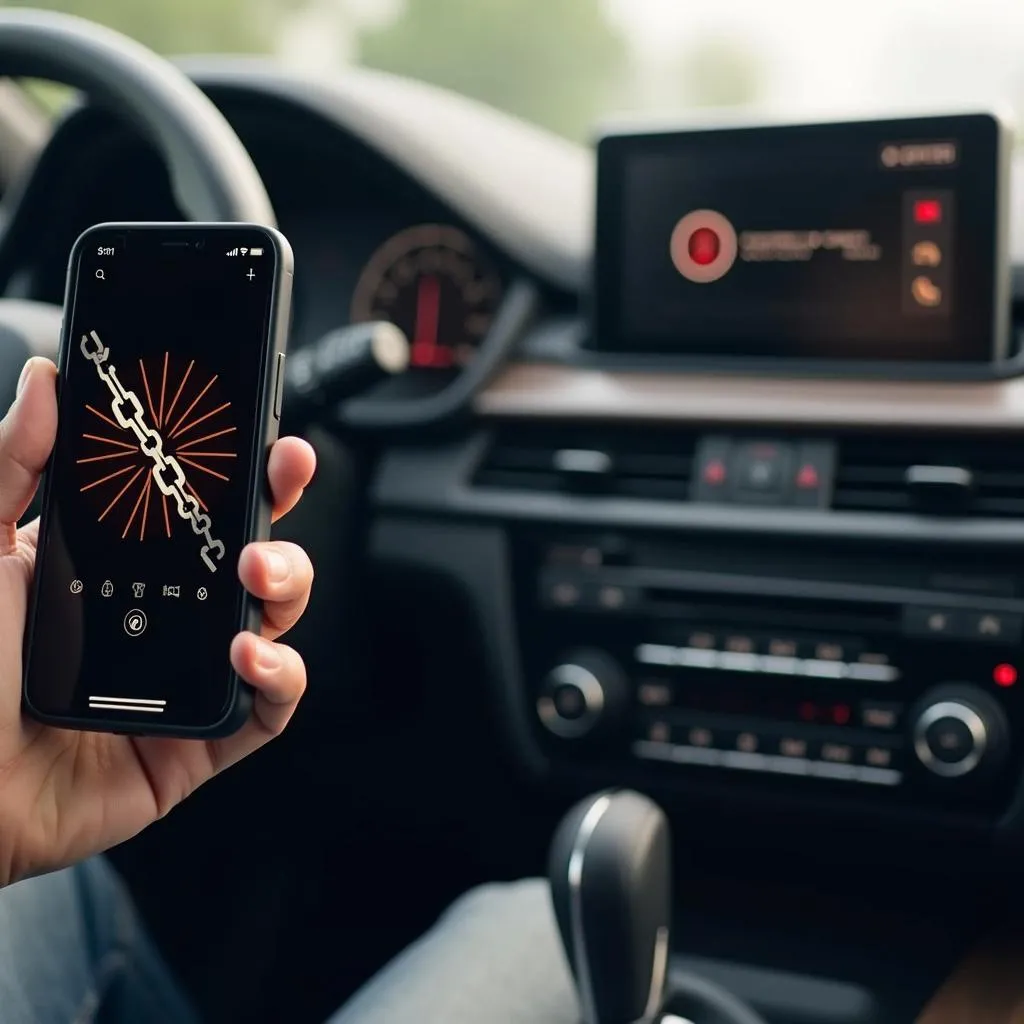A glowing brake warning light on your dashboard is a clear signal that something’s amiss with your braking system and requires immediate attention. While it can be a nerve-wracking experience, understanding the common culprits behind this warning light can equip you with the knowledge to address the issue effectively. This comprehensive guide delves into the possible reasons your brake warning light is on, providing you with the insights needed to diagnose and potentially resolve the problem.
Deciphering the Brake Warning Light
The brake warning light is designed to alert you about several potential issues within your braking system. Its illumination doesn’t always signify a complete brake failure, but rather indicates a problem that needs investigation. Here’s what your brake warning light might be trying to tell you:
- Low Brake Fluid: This is one of the most common reasons for the brake warning light to illuminate. A leak in the brake lines or a worn-out brake master cylinder can lead to low brake fluid levels, compromising your car’s ability to stop effectively.
- Worn Brake Pads: Brake pads naturally wear down over time due to friction. When they become too thin, a sensor within the brake system triggers the warning light.
- Faulty Brake Light Switch: In some cases, a malfunctioning brake light switch can cause the brake warning light to turn on. This switch is responsible for activating your brake lights when you press the brake pedal.
- ABS Issue: If your vehicle has an Anti-lock Braking System (ABS), the warning light might indicate a problem with this system. This could involve a faulty ABS module, wheel speed sensor, or other components.
- Parking Brake Engaged: While seemingly obvious, sometimes the brake warning light is simply a reminder that your parking brake is engaged. Always ensure the parking brake is fully released before driving.
 Brake Fluid Reservoir Inspection
Brake Fluid Reservoir Inspection
What to Do When Your Brake Warning Light Turns On
If your brake warning light illuminates while driving, it’s crucial to take immediate action to ensure your safety and the safety of others on the road.
- Pull Over Safely: As soon as it’s safe, carefully steer your vehicle to the side of the road and come to a complete stop.
- Check Your Parking Brake: Make sure your parking brake is fully released. If it was engaged, disengaging it might turn off the warning light.
- Inspect Brake Fluid Level: If your parking brake isn’t the issue, carefully open the hood and locate the brake fluid reservoir. Check the fluid level, ensuring it’s between the minimum and maximum markings.
- Avoid Driving Further: If the brake fluid level is low or you suspect any other issue with your braking system, avoid driving your vehicle further. Driving with compromised brakes is incredibly dangerous.
- Seek Professional Assistance: Contact a qualified mechanic or a trusted automotive service center to diagnose and repair the problem. Explain the symptoms you’ve experienced and any observations you’ve made.
 Mechanic Inspecting Brake Pads
Mechanic Inspecting Brake Pads
The Importance of Timely Brake Inspections
Regular brake inspections are crucial for maintaining a safe and reliable vehicle. During a brake inspection, a qualified technician will thoroughly examine your entire brake system, including:
- Brake Pads and Rotors: Checking for wear and tear and recommending replacement if necessary.
- Brake Lines and Hoses: Inspecting for leaks, cracks, or any signs of damage.
- Brake Fluid: Checking the fluid level, condition, and recommending a flush if needed.
- Master Cylinder: Inspecting for leaks and proper function.
- Parking Brake: Testing for proper engagement and release.
“Regular brake inspections aren’t just about maintaining your car; they’re about safeguarding your life and the lives of others on the road,” says veteran mechanic John Anderson. “Don’t wait for a warning light to remind you – be proactive about your safety.”
Remote Diagnostics and Programming: The Future of Automotive Repair
Advancements in automotive technology have paved the way for innovative solutions like remote diagnostics and programming. These cutting-edge services allow skilled technicians to remotely access a vehicle’s onboard computer system, diagnose issues, and even reprogram certain modules without requiring a physical visit.
bmw-1-series-brake-light-warning-light
In the context of brake warning light issues, remote diagnostics can prove invaluable. Technicians can analyze error codes, assess sensor data, and gain insights into the problem’s root cause. This remote access facilitates quicker diagnoses, potentially saving you time and money compared to traditional in-person inspections.
Conclusion
A glowing brake warning light is a serious matter that should never be ignored. By understanding the potential causes, responding proactively, and seeking professional assistance when needed, you can help ensure your safety on the road and prolong the life of your vehicle’s braking system. Regular inspections and staying informed about your car’s maintenance needs are always the best ways to prevent unexpected brake issues and enjoy peace of mind behind the wheel.


